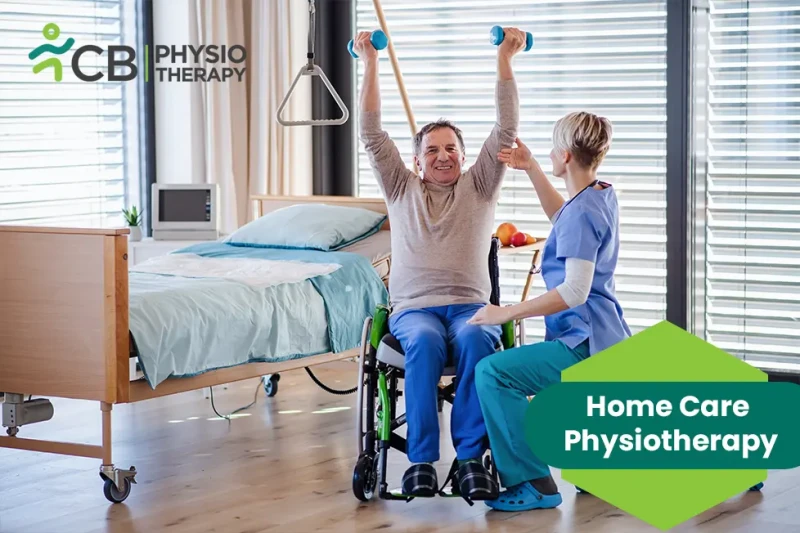CB Physiotherapy provides physiotherapy for different conditions that too by the best physiotherapists. They provide high-end physiotherapy treatments that cater to the specific needs of the patient. The following are the services that CB Physiotherapy provides:
Chest Physiotherapy: This physiotherapy treatment is especially for those suffering from respiratory /cardiac problems. This helps in improving respiratory efficiency, promoting the expansion of lungs strengthening respiratory muscles, and eliminating secretions from the respiratory system. Chest physiotherapy treatment by physiotherapists in multiple cities from CB Physiotherapy includes postural drainage, chest percussion, act vibration, deep breathing exercises, and coughing which are often done in conjunction with treatments like suctioning and administering of expectorant drugs.
The physiotherapist can help teach you breathing exercises to do yourself to help keep your airways clear as well as use techniques known as percussion, vibrations, and postural drainage to help loosen the secretions. For those people who are unable to generate an effective enough cough to get rid of the phlegm assisted coughing is a technique that can be used. They can also advise on any breathing equipment that may be of help to improve oxygen flow or make the mucus looser and reduce shortness of breath. Prior to each treatment assessment techniques such as auscultation using a stethoscope to listen to your lungs will be performed.
Musculoskeletal Physiotherapy: This physiotherapy treatment is for people suffering from musculoskeletal problems. This physiotherapy includes the treatment of muscles, bones, joints, nerves, ligaments, cartilage, and spinal discs. The various techniques used to treat include therapeutic exercises, mobilizations/manipulations, soft tissue massage, electrotherapy, hydrotherapy, and neural mobilization. Some of the home treatment modalities would include massage therapy, hydrotherapy, strengthening, and stretching exercises.
Orthopedic Physiotherapy: This physiotherapy treatment is associated mainly with bones. This physiotherapy is used for the rehabilitation of patients who are either planning to undergo surgery or who have already undergone surgery. Conditions like knee replacement, hip surgery, back surgery, Spinal and peripheral joint problems, fractures, etc. are treated. Orthopedic Physiotherapy treatment mainly includes physical activity like exercises, mobilizations, and proprioceptive training. The exercises include stretches, aerobics, strength training, and a range of motion exercises supported by modern medical technology such as IFT, Ultrasound, and manual traction.
Post-Surgical Physiotherapy: This physiotherapy treatment is made especially for those who have undergone surgeries. Post-Surgical physiotherapy helps in the restoration of activity post any surgery. Mobilization exercises, Muscle strengthening exercises, and stretching exercises are mainly used in this treatment by physical therapists. Common surgeries include the spine, hip, ankle, shoulder, and cardiac surgeries. Using a range of exercises, Physiotherapists help patients regain muscle strength and movement so that they can perform routine tasks as soon as possible.
Physical exercises such as Quadriceps sets, Straight leg raises, Ankle pumps, Knee straightening exercises, Bed-supported knee bends, Sitting supported knee bends, Stair climbing and descending and Sitting unsupported knee bends, etc. help patients re-establish muscle strength, joint motion, full joint movement, and flexibility. Advanced exercises such as Standing knee bends and assisted knee bends are recommended to build optimal strength and functionality, once the patient has regained independence for a shorter distance.
Speech Therapy: This physiotherapy treatment is for those who are suffering from disorders of speech, language, and communication as well as for swallowing difficulties in children and adults. These problems can arise from neurological impairments like
stroke, head injury, and
dementia, etc.
A speech therapy program begins with an evaluation by a speech-language pathologist (SLP) to assess the person’s communication strengths and challenges. From this evaluation, the SLP creates individual goals for therapy. Common goals may include improving spoken language, learning nonverbal skills such as signs or gestures, or learning to communicate using an alternative method (such as pictures or technology).
Examples of the skills that speech therapy may work on include:
- Strengthening the muscles in the mouth, jaw, and neck
- Making clearer speech sounds
- Matching emotions with the correct facial expression
- Understanding body language
- Responding to questions
- Matching a picture with its meaning
- Using a speech app on an iPad to produce the correct word
- The modulating tone of voice
Sports Therapy: This physiotherapy focuses on the treatment and rehabilitation of a sportsperson. Physical activity including fitness programs and education for athletes are the major aspects of this treatment. With a team of the best physiotherapists in multiple cities, CB Physiotherapy is one of the most trusted physiotherapy agencies that provide customized treatment as per the requirement of patients. Our therapist may use different modalities and assistive devices may be prescribed to help in stabilizing the injured part and prevent you from using it. The main goal here is to promote healing by reducing pain and swelling
Sports rehabilitation aims to help you recover your athletic skills by utilizing various treatment techniques that focus on balance, coordination, flexibility, and strength. Sport-specific exercises and muscle reconditioning will be implemented so the injured part can re-learn how to move the way it used to. You will also be taught new techniques for protecting muscles and joints that are susceptible to injuries. By far the most common sports injuries are ankle sprain, epicondylitis, groin pull, hamstring strain, ACL tear, patellofemoral syndrome, and shin splints. Others include bursitis, neck pain or strain, rotator cuff injuries, shoulder injuries, and low back pain. Note that some of these injuries depend on what you play and therefore more common in your specific type of sport.
